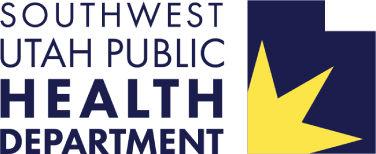Injury Prevention
Our mission is to educate parents, youth, and community members about preventable injuries. In child passenger safety, adult seat belt use, recreational injuries, home safety, and overall community safety. Browse the resources below to learn ways to keep your community safe.
Injury Prevention Resources
Community | Protect Yourself
HEADS UP FOR PEDESTRIANS
Dusk, dawn and dark hours increase the risk for an auto-pedestrian crash. Drivers always keep an eye out for pedestrians. Pedestrians make sure you wear reflective gear and/or lights when out at dusk, dawn and night.
5 DRIVING TIPS TO ALWAYS REMEMBER
- Drive Alert
- Drive Focused
- Drive Calm
- Drive Sober
- Drive Buckled
HIGHWAY SAFETY OFFICE TIPS: ACTIVE TRANSPORTATION
MOTORCYCLE SAFETY
Learn more about reducing motorcycle related crashes, injuries and fatalities on Utah roads. This is a top priority and we need everyone’s help to reach this goal.
STATISTICS
Parents | Keep Family Safe
CHILD PASSENGER SAFETY
Is your car seat safe? Did you know that only 40% of car seats are installed correctly? At the Southwest Utah Public Health Department, we have trained and certified Car Seat Technicians that provide free car seat safety checks for all of our Southern Utah residents. In addition, we have a free Car Seat Program to help families that qualify.
CAR SEAT AGE RECOMMENDATIONS
Nationwide, motor vehicle crashes are a leading cause of injuries and deaths for children ages 0-14. According to the Children’s Hospital of Philadelphia, properly used car seats reduce the risk of death in passenger cars by 71 percent for infants and 54 percent for toddlers. For children 4 to 8-years-old, booster seats reduce injury risk by 45 percent compared to seat belts alone.
SAFE ROUTES UTAH MAPPING
The goal of Safe Routes Utah is to help children get to and from school safely while motivating children to experience the benefits of walking or biking to school.
PEDESTRIAN AND BIKE SAFETY
Learn some tips and tricks to keep your family safe when walking and biking around the neighborhood or to school!
TEEN DRIVER SAFETY
Inexperience behind the wheel is the number one reason teen drivers get into crashes. For teens to become safe and responsible drivers, they need to develop a range of critical driving skills. These skills are learned during the 40 hours of required drive time completed while they have their learner permit. Zero Fatalities has teamed up with the Center for Injury Research and Prevention at Children’s Hospital of Philadelphia (CHOP) to provide you with resources, lessons and tools to help your teen develop these critical driving skills and practice in a range of driving environments and conditions.
Schools | Student Safety
WALK & ROLL TO SCHOOL
We can help support your school in planning a Walk & Roll to School Day. Helps promote safe riding and walking to school in your community. Fill out our event request form to get connected with one of our health educators.
SAFE ROUTES PEDESTRIAN SAFETY ASSEMBLY
The Safe Routes Utah Beat the Street assembly is a free, 30-minute program about walking and biking to school safely. It is available statewide with an assembly for grades 1st-3rd and one for grades 4th-6th. This dynamic, educational presentation teaches students about the importance of traffic signs, signal lights, crossing the road, and helmet use. Fill out this form to get connected with one of our health educators.
CONSTRUCTION SAFETY ASSEMBLY
When it comes to construction areas, the old adage “better safe than sorry” could not be more true. If your elementary school is in or near a construction zone, we would love to come and give our “Think Safety” assembly to your students. In this fun and interactive assembly, we teach the kids how to be safe around construction with a rousing relay race. UDOT reminds all motorists, residents, businesses and students to remember the safety rules in construction zones:
- Don’t play in or around construction zones.
- Orange means construction.
- Never go beyond the safety fences or construction cones.
- Don’t touch or play on construction equipment and don’t follow construction trucks.
- Cross only at designated areas: look left, look right and then look left again.
- Use designated detour routes.
- Stay safe around trucks: if you can’t see the driver’s face, they can’t see you.
- Always obey all flaggers and construction signs.

